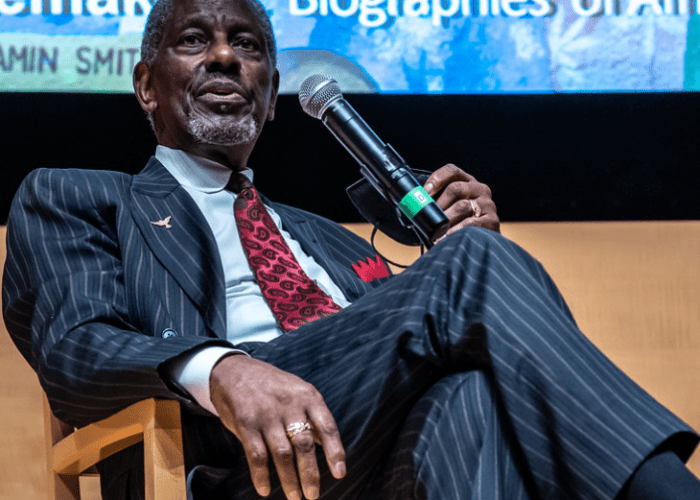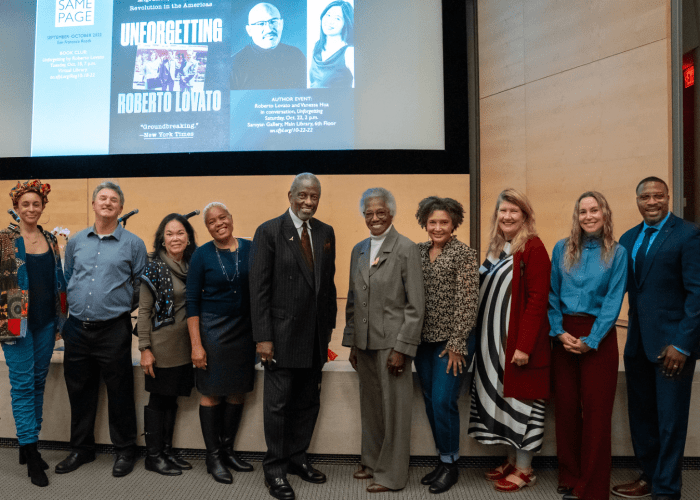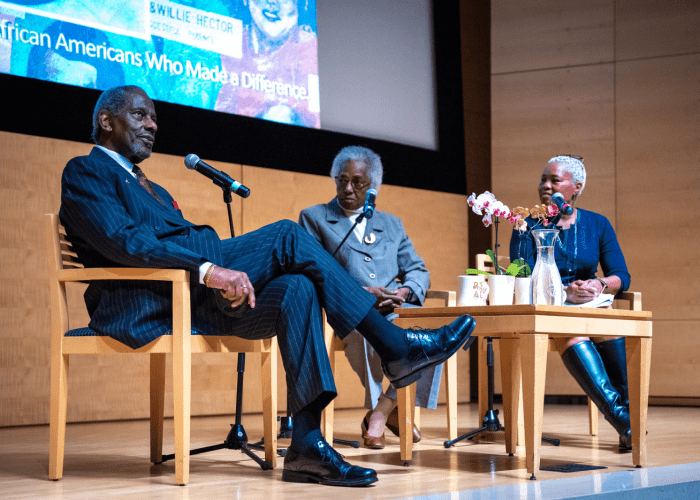
Celebrating Black Excellence
In today’s blog we share Stephanie Sears’, associate professor and director of the Esther Madriz Diversity Scholars Living-Learning Community, excerpt of her introduction and discussion to the Changemakers 3rd Anniversary Celebration. Her writing demonstrates the historical context of Black San Franciscan activism and the aspects that makes someone a Changemaker.
“I’m honored today to serve as the moderator for this Changemaker conversation.
Before I introduce our esteemed panelists, I would like to provide a brief overview of the socio-historical context that frames our conversation today.
In order to understand the Fillmore and the change-making that emerged from this neighborhood, it’s important to understand how Black San Franciscans have constructed a legacy of resistance and change-making that has not only shaped San Francisco but has had an important role in US politics and culture.
African Americans arrived during the 1700s and were among some of the early California settlers and landowners. Alexander Liedesdorff, for example, helped established SF. Moreover, with the gold rush, enslaved and free Black folks began arriving in San Francisco to work the gold mines and settled near the waterfront, eventually expanding their community to Telegraph Hill.
Despite facing illegal enslavement, and massive discrimination, they owned real estate, and created schools, businesses, political organizations, newspapers, and churches that anchored the community and activated and amplified black voices. For example, in 1852, they established the first Black Baptist Church west of the Rockies (originally called the First Colored Baptist Church of SF and now known as the 3rd Baptist Church). Where Rev. Brown has served as pastor for many years.
While the number of Blacks stayed around 1500 until after WW1 and increased to about 4000 until the onset of WW2, between 1940-1950, SF’s Black population grew from 4,836-43,460, with a vast majority of these residents living in the Fillmore. By the end of WW2, the Fillmore became known as the Harlem of the West. It was the center of Black life, music, and entertainment in SF. The district had sixty-three small businesses and “more than two dozen active nightclubs and music joints which hosted artists such as Billie Holiday, Miles Davis, Dizzy Gillespie, John Coltrane, Johnny Mathis, Etta James, Thelonious Monk, Chet Baker, and Dexter Gordon.
The development of the Fillmore was fueled by three factors:
-
-
- Black folks were leaving the South to escape Jim Crow as part of the 2nd wave of the Great Migration.
- The jobs created by the bustling waterfront and shipbuilding industries which were a critical part of the wartime economy.
- Because of the forced removal and incarceration of Japanese-Americans into internment camps and discriminatory housing practices such as redlining and racial covenants that prohibited black ownership and in some cases rental of property in many parts of the city. Black arrivals were pushed towards and gravitated to the available housing in the Fillmore.
-
The Fillmore became a city within the city. It was a community for us, by us.
In the midst of this exponential growth and cultural development, racist housing policies continued, and other forms of racial discrimination intensified. For example, SF housing discrimination was put into the national spotlight when in 1957, sports legend Willie Mays was unable to purchase a home in Sherwood forest neighborhood due to the owner refusing to sell their home to “Negroes.”
During the 1960s, Black activism in SF exploded, Blacks and white allies organized by CORE, NAACP, and the Ad hoc committee to end discrimination used sit-ins, marches, pickets, and parades to demonstrate against discriminatory hiring practices in SF’s grocery stores, department stores, hotels, and banks which put SF’s civil rights struggle in the national spotlight and part of the national movement. In addition, the Black Panthers had an office in the Fillmore and from which they offered community programs throughout the city.
Yet, it was urban renewal and redevelopment that ultimately altered what we now know as the Fillmore. Using rhetoric like “blighted” and “slum clearance” to morally justify destroying a thriving neighborhood, urban renewal, or what James Baldwin called “Negro removal” shuttered over 800 businesses, demolished an estimated 2500 Victorian homes, and displaced between 10,000-30,000 people in the Fillmore.
It’s important to note that this devastation did not happen without a fight. Community Organizations were created to stop the devastation, and other community members tried to work with the redevelopment organization in an attempt to alter its devastating course.
Yet it is within this context that our panelists today grew up, developed their vision of justice, and practiced and honed their change-making practices.
I’m sure they will have much more to say about the fight for the Fillmore and for justice for Black San Franciscans. We think of SF as a progressive city. Yet SF’s progressiveness is a result of the hard-fought battles that African Americans and others have waged to make this city what it is today. Moreover, these struggles continue. And it is African American Changemakers that are often at the forefront of these struggles.
The Changemakers Book:
It is this history and its importance not only to Black San Franciscans but its centrality to SF history, politics, and culture that motivated this book. This book celebrates Black excellence and honors the change-making legacies of the 96 people represented on the Inspiration murals found on Ella Hill Hutch. This book is a collaborative effort and represents the best of what can happen when many people come together to create something for the greater good. So quickly, here’s how it all went down:
In 2015, Brenda Harris approached Karin Cotterman of the LTMCC, about having USF students write the biographies of the Changemakers featured on the inspiration murals located on the walls of Ella Hill Hutch.
In 2015, I was asked if I would be interested in having EMDS students work with Ms. Altheda Carrie, Ms. Lynnette White, and the late Eugene White, affectionately known as the dream team, on this project. I want to slow down here and give a shout-out to Ms. Lynnette, who is joining us on Zoom today. Without the guidance, direction, and passion of this dream team, this project would NOT have happened. They generously gave their time and met with students and often came to campus to allow students to conduct group interviews with them so that they could be prepared for interviewing other members featured on the murals. So Ms. Lynnette, thank you! Thank Ms. Altheda Carrie. And heavenly thanks to Mr. Eugene White for your conversations, your beautiful art, and especially the image of Ella Hill Hutch that graces the cover of this book. You are deeply missed.
At the end of the first year, the idea of a book that could bring together these life histories was tossed about. Knowing that that was outside of my skill set, I reached out to David Holler, the faculty director of the MBS LLC.
In 2016, MBS joined the team, and ultimately, a total of 87 USF students worked on the project and saw it to completion. In addition to completing interviews, David, his students, and research assistants researched, revised, and edited biographical information, located images, secured permissions, as well as designed the book.
While we are focusing on the Changemakers found on the inspiration mural and those that spearheaded this project, we would be remiss if we didn’t say a few words about the students.
Thank you David In addition to the students, this book would not be possible without the support from the whole LTMCC team, the team at SFPL, the African American historical society, Wendy Nelder, and the Haas Foundation.
What is a Changemaker?
The title of the book is Changemakers. So what is a changemaker? Drawing upon a definition put forth by the Ashoka Foundation, a changemaker is a social innovator and/or disruptor that imagines a new reality, creates new possibilities, and takes creative action with others to solve a social problem for the greater good.
They reinvent rules, do things differently and are prepared to travel against the current and go upstream.
Changemakers move beyond intention and passion and translate thoughts into action. Black San Franciscans continue this tradition of change-making.”







